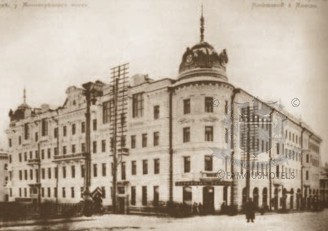
Baltschug Moscow
On the site of the former Hotel Bucharest, the Hotel Baltschug Kempinski Moscow has been writing its own history for over a decade. The exterior walls, dating back to 1898 and the reign of Tsar Nicholas II, are the only remnants of the original building. The hotel first made headlines when its new building was erected in 1898 by the well-known Moscow architect Alexander Ivanov.
Featuring a stunning façade embellished with decorative figures overlooking the river and a more modest front for the Balchug Street side, the new building displayed architectural elements from the era of neoclassicism. This early hotel offered a diverse selection of goods and services for guests: a restaurant with a three-furnace beer brewery as well as a barber, baker and loan agency were located alongside shops selling metal goods, window shades, cheese and bread.
Following the October Revolution, the building again changed hands. From 1928 to 1932, as the Hotel Novomoskovskaya, it became a massive seven-story stone structure. In 1933, ownership transferred to Intourist, the official state tourist agency, which used the building as a dormitory before it became the Hotel Bucharest in 1957.
Since 1992 it is called Baltschugg, an the management company Kempinski assures us of high quality service. Spectacular views of the Kremlin, Red Square and St. Basil's Cathedral makes it the perfect vantage point overlooking Moscow's historic centre. Moscow's main attractions are just minutes away, and some even within easy walking distance, the hotel's location in the relatively quiet Zamoskvorechye Moscow district provides an opportunity to escape the hustle and bustle of the city center to a luxurious haven of peace and comfort.

In 1939 the hotel was converted into a residential hostel for the Department of Foreign Policy, but sixteen years later it was once again reincarnated, this time as the Hotel Bucharest. Over the years the building began to show its age, and in the 1980s the question of refurbishment came up; this, it was recognized, would require significant investment. The issue was solved in 1989 when a joint Russian Austrian Swiss enterprise was formed, 'Baltschug', which placed an order for the construction work with an Austrian company.
The Austroy Baugesellschaft transported building materials from Austria by truck in over 600 trips.
1992: 1 October saw the re-opening of a hotel unsurpassed in beauty and well worth the reconstruction costs of approximately USD 85 million. Since then the Hotel Baltschug Kempinski Moscow has served as a preferred venue for many important events, bringing people together to help make the Moscow miracle happen.
230 Rooms